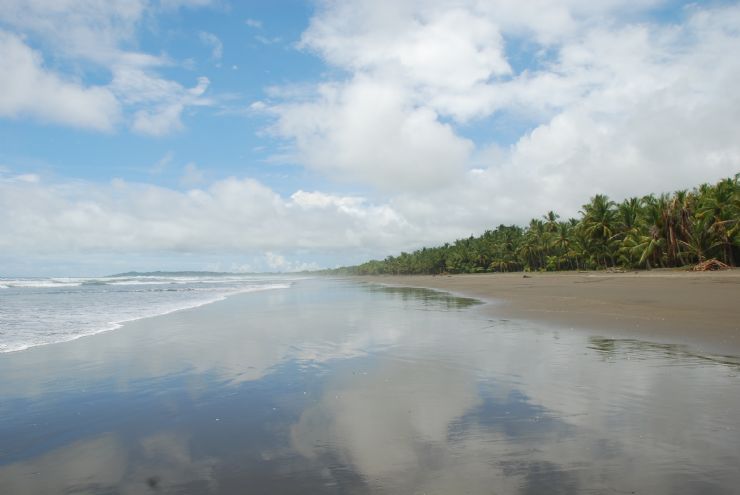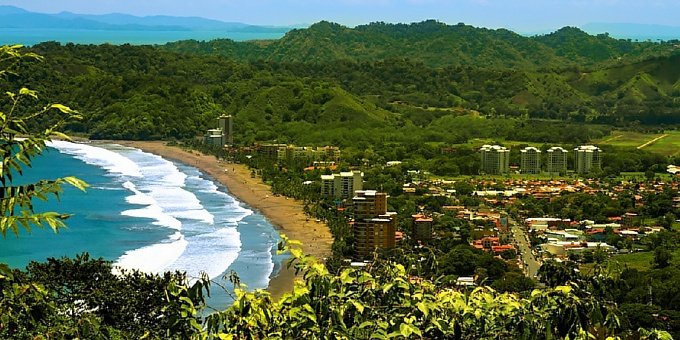Beaches
BEACHES OF PENINSULA DE NICOYA
The Nicoya Peninsula is separated from the mainland of Costa Rica by the Gulf of Nicoya and the Tempisque estuary. This region is well known for its beaches and the sun, which is exactly what visitors find along its coastline, with an abundance of hotels, cabins, and restaurants. Some are luxury ones, others more modest, but they all guarantee that guests have the perfect option for each budget.
You can reach Flamingo Beach, an ideal place for those lookimg for a mix of good hotels and a quiet atmosphere. Grande Beach is located further south, and along with Las Baulas National Park, is a sanctuary for thousands of leatherback turtles (baula) arriving to spawn in its coasts each year. Tamarindo offers a blend of white-sand beaches and mangroves, sea birds and iguanas, making it a paradisiacal and perfect spot for those wishing to live in harmony with nature.
Many other beaches along the coast of Guanacaste will complete a matchless natural offer. Carrillo Beach, Ostional Beach, Manzanillo, and Conchal, are some of those destinations giving the greatest province of Costa Rica its reputation.
Many of these beaches are Blue Flag beaches, a distinction granted to beaches with excellent or very high sanitation and cleanliness.
 Tamarindo-Langosta |  Conchal-Brasilito |  Flamingo-Potrero-Las Catalinas |
 Punta Islita |  Nosara |  Samara-Carrillo |
CARIBBEAN
This region extends from the city of Limon to the border with Panama and offers a unique combination of beaches, natural resources and Afro-Caribbean culture. It possesses a unique culture in Costa Rica, a way of life that may be fully appreciated during the traditional carnivals held each year, an experience of rhythms and euphoric and captivating colors.The Caribbean’s extraordinary natural and cultural wealth allows adventure and natural history activities which definitely compliment with culture, gastronomy and music. Stand out the reefs, multicolor-sanded high quality beaches (from black to yellow and gray), coastal vegetation and medium-high forest.Cahuíta National Park and Gandoca Manzanillo Reserve are worldwide recognized, not only because of their natural beauty but because they are becoming unique conservation places in almost the whole Caribbean.
 Cahuita |  Puerto Viejo |  Playa Chiquita |
 Playa Cocles |  Playa Gandoca-Manzanillo |  Bribri |
NORTH PACIFIC
Entirely encompassed by Guanacaste province, the north Pacific is known for its spectacular beaches and the sun. Panamá Beach is one of the good options for tourism. A quiet place with white sand and easy waters, invite you to enjoy a care-free weekend. Coco’s Beach features as one of the most popular spots, due to its night life and great number of visitors. There are also Ocotal and Hermosa beaches, ideal for scuba diving and sport fishing, and the beaches of the Gulf of Papagayo with their calm and crystalline waters, among the favorites of Guanacaste region’s coast.
 Papagayo |  Playa Panamá |  Playa Hermosa |
 Playas del Coco |  Playa Jobo |  Playa Ocotal |
CENTRAL PACIFIC
This spectacular area is very close to the Central Valley, a two-hours drive, 120 kms away from the capital. It has three cities attractive to tourists: Quepos, Jacó and Puntarenas - the principal center, nice for stopovers, distribution, scale and excursion. A wet and rainy climate allows for greater biodiversity in the beaches and hills next to the coast; thus, there is a transition from tropical wet forest to tropical forest to tropical dry forest. These ecosystems provide habitat for numerous plant and animal species that are protected in several wilderness areas. Also included within this zone is Isla del Coco, at almost 600 kilometers from the port of Puntarenas. The coast is made up of numerous beautiful beaches. With regard to wilderness areas, the region features wildlife refuges, national parks and biological preserves. Other important attractions are of cultural and recreational interest that distinguishes the region. Also worthy of note is the scenic beauty along the coastal highway that connects the Caldera area with the Quepos and Manual Antonio region.Manuel Antonio is one of the smallest National Parks in Costa Rica but, at the same time, one of the most highly visited thanks to its impressive white-sand beaches, blue waters of the Pacific and hundreds of hectares of rainforest.
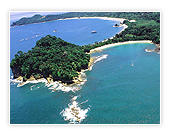 Manuel Antonio | ||
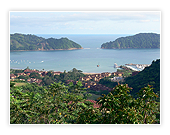 Playa Herradura | 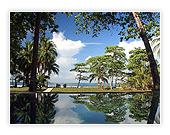 Malpais/Santa Teresa | 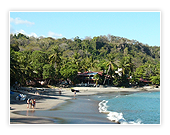 Montezuma |
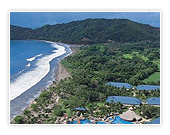 Tambor-Paquera |
SOUTH PACIFIC
Regarding as being one of the wildest part of the country, the south Pacific offers enchanting beaches and an extraordinary variety of fauna and flora. One important protected area is located in this zone: the Corcovado National Park -located south and constituting the habitat of important endemic species such as the gold frog, defined by National Geographic Magazine as “the planet’s biologically richest place”.
The main activities in this area include beach enjoyment and marine resources, such as whales and dolphin’s observation, as well as mangrove swamp’s, landscapes, reptilian, sport fishing, surfing, hiking through the National Park’s paths, professional diving, botanical gardens, protected areas, impressive waterfalls…
 Osa - Drake |  Osa - Puerto Jimenez/ |  Dominical |
 Uvita -Ballena-Tortuga |





